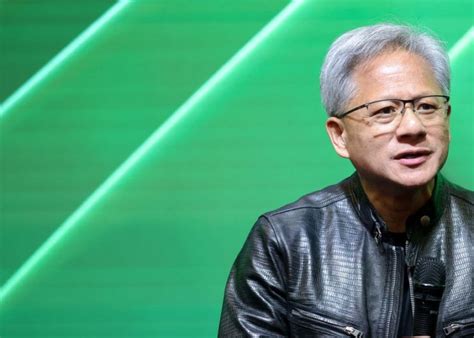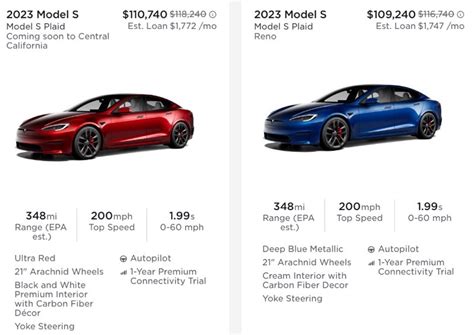
Nvidia CEO Jensen Huang acknowledged China’s significant advancements in artificial intelligence, stating their AI capabilities are “world-class” and noting that U.S. companies are actively recruiting Chinese AI talent in large numbers.
Speaking at the Qatar Economic Forum, Huang addressed the ongoing competition between the U.S. and China in the AI sector, emphasizing that China is not lagging behind. “They’re building AI, they’re a very large market, they are world-class. There’s no question about it,” Huang said, highlighting the scale and sophistication of China’s AI development.
Huang’s remarks come amid escalating tensions between the two countries regarding access to advanced technology, particularly semiconductors, which are crucial for AI development. The U.S. government has imposed restrictions on the export of certain high-performance chips to China, aiming to slow down its technological advancement. Despite these restrictions, Huang indicated that Chinese companies are finding ways to innovate and compete effectively.
The CEO also noted that U.S. firms are actively hiring AI specialists from China, signaling recognition of the expertise and talent available in the Chinese AI sector. “U.S. companies hire a whole bunch of people from there, just like all the countries in the world,” Huang stated, underscoring the global nature of the AI talent pool. This international exchange of talent further underscores the interconnectedness of the AI ecosystem, even amidst geopolitical tensions.
The comments arrive at a time when Nvidia is navigating complex regulatory challenges in the Chinese market. U.S. export controls have forced Nvidia to create modified versions of its high-end chips to comply with restrictions while still serving the Chinese market. The company’s ability to maintain its market share in China is crucial, as it represents a significant portion of its revenue.
China’s AI Capabilities
Huang’s assessment of China’s AI capabilities as “world-class” aligns with numerous reports and studies that highlight the country’s rapid progress in this field. China has invested heavily in AI research and development, driven by both government initiatives and private sector innovation. The Chinese government has set ambitious goals for AI leadership, aiming to become a global AI innovation center by 2030.
One of China’s key strengths in AI lies in its vast data resources. With a large and digitally connected population, China generates massive amounts of data that can be used to train AI algorithms. This data advantage, combined with significant investments in computing infrastructure, has enabled Chinese companies to make significant strides in areas such as computer vision, natural language processing, and machine learning.
Chinese AI companies have also made significant inroads in specific applications. For example, China is a leader in facial recognition technology, which is used in a variety of applications, including security, surveillance, and payment systems. The country also has a thriving AI ecosystem, with numerous startups and established companies competing and collaborating to develop innovative AI solutions.
Impact of U.S. Export Controls
The U.S. government’s export controls on advanced chips have created significant challenges for Nvidia and other semiconductor companies. These restrictions are designed to prevent China from accessing technology that could be used for military or strategic purposes. However, they also have implications for commercial applications of AI, as many advanced AI algorithms require high-performance computing resources.
Nvidia has responded to the export controls by developing modified versions of its chips that comply with the restrictions. These chips offer reduced performance compared to their unrestricted counterparts, but they still allow Chinese companies to access Nvidia’s technology. The company has also been working to diversify its supply chain and reduce its reliance on U.S. suppliers.
The impact of the export controls on China’s AI development is a subject of debate. Some analysts believe that the restrictions will significantly slow down China’s progress, while others argue that Chinese companies will find ways to innovate around the restrictions. It is likely that the export controls will create both challenges and opportunities for the Chinese AI sector.
The Global AI Talent Pool
Huang’s comments about U.S. companies hiring AI talent from China highlight the global nature of the AI talent pool. AI is a highly specialized field, and there is a global shortage of skilled AI professionals. Companies around the world are competing to attract and retain top AI talent.
China has a large and growing pool of AI talent, thanks to its investments in education and research. Many Chinese universities offer top-ranked computer science and engineering programs, and the country has a large number of AI researchers and engineers. This talent pool is attractive to companies around the world, including those in the U.S.
The international exchange of AI talent can benefit both countries. U.S. companies can gain access to expertise and perspectives that they may not find domestically, while Chinese AI professionals can gain experience working on cutting-edge projects in the U.S. However, there are also concerns about the potential for technology transfer and the impact on U.S. competitiveness.
Nvidia’s Position
Nvidia’s position in the AI market is unique, as it is both a beneficiary and a potential victim of the U.S.-China tech rivalry. The company’s GPUs are widely used in AI training and inference, making it a key supplier to both U.S. and Chinese companies. However, its access to the Chinese market is constrained by U.S. export controls.
Nvidia has been working to navigate these challenges by developing compliant chips and diversifying its supply chain. The company is also investing heavily in research and development to maintain its technological lead. Its success in China will depend on its ability to continue to innovate and adapt to the evolving regulatory landscape.
The statements made by Jensen Huang underscore the complexity of the geopolitical dynamics impacting the AI industry. As AI technology continues to evolve and its strategic importance grows, the intersection of technological innovation, talent mobility, and international relations will remain a critical area of focus for businesses and policymakers alike. Nvidia’s role as a pivotal player in this landscape ensures that its actions and pronouncements will continue to be closely watched.
Broader Implications
The situation highlights broader implications for the global AI landscape:
- Global Competition: The AI race is not confined to one nation. China’s advancements indicate a competitive environment that will likely drive innovation worldwide.
- Talent Acquisition: The demand for AI talent is global, and companies will increasingly seek expertise wherever it exists, transcending national boundaries.
- Geopolitical Factors: Geopolitical tensions, trade restrictions, and technology transfer concerns will continue to shape the AI industry’s development and market access strategies.
- Regulatory Compliance: Companies operating in the AI sector must navigate a complex and evolving regulatory landscape, adapting their products and strategies to comply with varying national policies.
- Economic Impact: AI technology has significant economic implications. The competitive AI landscape between the U.S. and China will influence economic growth, technological leadership, and job creation in both countries and globally.
Conclusion
Jensen Huang’s acknowledgment of China’s “world-class” AI capabilities and the recruitment of Chinese AI talent by U.S. firms underscores the complexity of the global AI landscape. While geopolitical tensions and export controls present challenges, the drive for innovation and access to talent will continue to shape the industry’s trajectory. Nvidia’s strategic positioning and adaptability will be crucial in navigating these dynamics and maintaining its market leadership. The future of AI will be shaped by the interplay of technological innovation, talent mobility, and geopolitical considerations, with companies like Nvidia playing a pivotal role in shaping that future.
Frequently Asked Questions (FAQ)
1. What was the main point of Nvidia CEO Jensen Huang’s statement at the Qatar Economic Forum?
Jensen Huang emphasized that China’s AI capabilities are “world-class” and that U.S. companies are actively hiring Chinese AI talent, highlighting the competitiveness and interconnectedness of the global AI landscape despite geopolitical tensions.
2. Why are U.S. export controls on advanced chips significant for Nvidia and the AI industry?
The U.S. export controls restrict the sale of high-performance chips to China, impacting Nvidia’s access to a significant market and potentially slowing down China’s AI development. Nvidia has had to develop modified chips to comply with these restrictions, affecting its product offerings and market strategy.
3. How has Nvidia responded to U.S. export controls affecting its business in China?
Nvidia has responded by developing modified versions of its chips that comply with U.S. export regulations, allowing them to continue selling to the Chinese market, albeit with reduced performance compared to unrestricted chips. The company is also diversifying its supply chain.
4. What factors contribute to China’s growing strength in artificial intelligence?
China’s strengths include massive data resources, significant government and private sector investments in AI research and development, a large and growing pool of AI talent, and a thriving ecosystem of AI companies and startups.
5. What are the potential implications of U.S. companies hiring AI talent from China?
The hiring of Chinese AI talent by U.S. companies can benefit both countries by providing access to expertise and perspectives, while also raising concerns about potential technology transfer and the impact on domestic competitiveness in the U.S.
Extended Analysis of the AI Landscape and Geopolitical Implications
The remarks by Nvidia’s CEO regarding China’s AI prowess and the hiring trends of U.S. firms are not isolated observations but rather signals of a broader, intricate web of technological, economic, and geopolitical dynamics. To fully comprehend the significance, one must delve into the underlying factors driving China’s advancements, the strategic importance of semiconductors, and the implications of a globally interconnected AI talent market.
Deep Dive into China’s AI Ecosystem
China’s ascent in the AI arena is underpinned by a multi-pronged approach characterized by:
- Government-Led Initiatives: The Chinese government has explicitly identified AI as a strategic priority and has articulated ambitious goals to become a global leader in AI by 2030. This vision is supported by substantial funding, policy support, and the establishment of national AI strategies and innovation hubs. Government initiatives also encourage collaboration between academia, industry, and research institutions, fostering a synergistic environment for AI development.
- Data Abundance: AI algorithms are data-intensive, and China benefits from a vast reservoir of data generated by its large and digitally connected population. This data, often collected through ubiquitous digital platforms and surveillance systems, provides a crucial resource for training and refining AI models, particularly in areas like computer vision, natural language processing, and predictive analytics.
- Entrepreneurial Dynamism: China’s AI landscape is characterized by a vibrant ecosystem of startups and established technology companies. These entities are actively developing AI solutions across diverse sectors, including e-commerce, finance, healthcare, transportation, and manufacturing. The competitive market environment incentivizes innovation and the rapid deployment of AI technologies.
- Investment and Funding: Substantial venture capital and private equity investments have fueled the growth of Chinese AI companies. These investments provide the necessary capital for research and development, infrastructure development, and talent acquisition. The availability of funding has been instrumental in accelerating the pace of AI innovation in China.
- Talent Development: China has invested heavily in education and training programs to cultivate a skilled AI workforce. Universities and research institutions are offering specialized AI courses and research opportunities, attracting top students and researchers. Additionally, the government supports initiatives to attract and retain AI talent from abroad.
Semiconductors: The Linchpin of AI
The ongoing U.S.-China tech rivalry is heavily centered on access to advanced semiconductors. These chips are the essential building blocks of AI systems, providing the computing power necessary for training and deploying complex AI models. The U.S. has imposed export controls on certain high-performance chips to China, aiming to restrict China’s access to cutting-edge AI technology.
- Nvidia’s Role: Nvidia is a dominant player in the market for GPUs (Graphics Processing Units), which are widely used in AI applications. Its GPUs offer superior parallel processing capabilities, making them ideal for training deep learning models. The export controls have forced Nvidia to develop modified versions of its GPUs that comply with the restrictions while still serving the Chinese market.
- China’s Semiconductor Ambitions: China is investing heavily in its domestic semiconductor industry to reduce its reliance on foreign suppliers. The country aims to achieve self-sufficiency in chip production, but this goal faces significant technological and economic challenges. The U.S. export controls have accelerated China’s efforts to develop its own semiconductor capabilities.
- Geopolitical Implications: The semiconductor issue has become a major point of contention in the U.S.-China relationship. The U.S. views its technological advantage in semiconductors as a strategic asset and is determined to maintain its lead. China, on the other hand, sees access to advanced chips as crucial for its economic and technological development.
The Global AI Talent Market
The AI industry is characterized by a global shortage of skilled professionals. Companies around the world are actively seeking to recruit and retain AI talent, regardless of their geographical location.
- China’s AI Talent Pool: China has a large and growing pool of AI talent, thanks to its investments in education and research. Many Chinese universities offer top-ranked computer science and engineering programs, and the country has a large number of AI researchers and engineers. This talent pool is attractive to companies around the world, including those in the U.S.
- U.S. Recruitment of Chinese AI Talent: U.S. companies are actively hiring AI specialists from China, recognizing the expertise and skills available in the Chinese AI sector. This international exchange of talent reflects the global nature of the AI talent pool and the demand for skilled professionals.
- Implications for Competitiveness: The international flow of AI talent can have implications for national competitiveness. While it can benefit companies by providing access to expertise and perspectives, it can also raise concerns about technology transfer and the potential impact on domestic innovation.
Challenges and Opportunities for Nvidia
Nvidia’s position in the AI market is complex, as it is both a beneficiary and a potential victim of the U.S.-China tech rivalry. The company’s GPUs are widely used in AI training and inference, making it a key supplier to both U.S. and Chinese companies. However, its access to the Chinese market is constrained by U.S. export controls.
- Navigating Export Controls: Nvidia has been working to navigate these challenges by developing compliant chips and diversifying its supply chain. The company is also investing heavily in research and development to maintain its technological lead.
- Maintaining Market Share: Nvidia’s ability to maintain its market share in China is crucial, as it represents a significant portion of its revenue. The company must continue to innovate and adapt to the evolving regulatory landscape to remain competitive.
- Long-Term Strategy: Nvidia’s long-term strategy will likely involve a combination of developing compliant chips, diversifying its markets, and investing in new technologies. The company will need to carefully balance its commercial interests with the geopolitical realities of the U.S.-China relationship.
The Broader Geopolitical Context
The developments in the AI industry are closely intertwined with broader geopolitical dynamics. The U.S. and China are engaged in a strategic competition that encompasses trade, technology, security, and influence. The AI race is a key component of this competition.
- Technological Leadership: Both the U.S. and China recognize the importance of technological leadership in AI. The country that leads in AI will likely have a significant economic and strategic advantage.
- National Security: AI has implications for national security, as it can be used for military applications, intelligence gathering, and cybersecurity. The U.S. and China are both investing heavily in AI for defense purposes.
- Global Influence: AI can also be used to project global influence. The country that leads in AI will likely have a greater ability to shape international norms, standards, and policies.
Conclusion
The comments by Nvidia CEO Jensen Huang underscore the complexity of the global AI landscape. China’s AI capabilities are undeniable, and the U.S. is actively seeking to tap into the talent and innovation emanating from the country. However, the U.S.-China tech rivalry and export controls present significant challenges for companies like Nvidia. The future of AI will be shaped by the interplay of technological innovation, talent mobility, and geopolitical considerations. Companies that can navigate these dynamics successfully will be well-positioned to thrive in the evolving AI ecosystem. The long-term implications of these trends will be profound, affecting the global economy, national security, and the balance of power. Continued analysis and strategic planning are essential for understanding and responding to the rapidly changing AI landscape.









